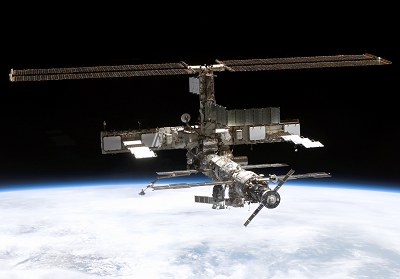
 Copyright © Michael Richmond.
This work is licensed under a Creative Commons License.
Copyright © Michael Richmond.
This work is licensed under a Creative Commons License.
Let's start out by looking at the physics behind the orbit of the International Space Station.

ISS is far above the surface of the Earth, at an altitude of about H = 350 km. Let's call its mass m.
Suppose that the ISS were held motionless at this position, and then released.
In real life, of course, the ISS isn't motionless; instead, it is moving around the Earth in a circular path with a pretty fast speed.
 Copyright © Michael Richmond.
This work is licensed under a Creative Commons License.
Copyright © Michael Richmond.
This work is licensed under a Creative Commons License.